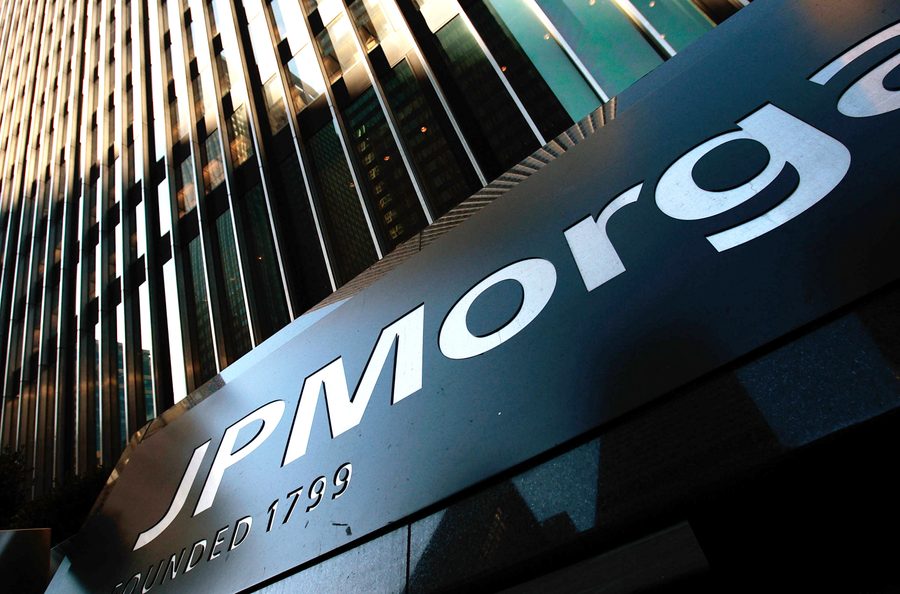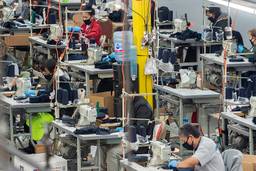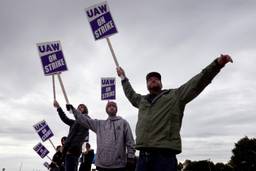Banks Have Made $18 Billion From "Paycheck Protection Program" Processing Fees Alone
Fees paid to banks eclipse funding allocated to develop vaccines, provide medical supplies and feed children.
Colleen Boyle

Whether or not a single job or company is saved through the CARES Act’s Paycheck Protection Program (PPP), lenders will be paid hundreds of millions of dollars in taxpayer money. As of mid-July, PPP lenders, including JPMorgan Chase Bank, Bank of America and Wells Fargo, had racked up $18 billion in fees—more than was allocated to other programs to develop vaccines, provide medical supplies and health services, and feed children. Nearly $130 billion in PPP funds have gone untapped, yet both the HEROES Act passed by the House of Representatives in May and the HEALS Act introduced by the Senate in late July call for the program’s extension while removing requirements that most of its funding be spent on payroll.
The Paycheck Protection Program was designed to “provide a direct incentive for small businesses to keep their workers on the payroll,” according to the Small Business Administration (SBA). Issued by lending institutions and guaranteed by the SBA, PPP loans cover up to eight weeks of average monthly payroll costs between $1,000 and $10 million, and may be used for payroll, mortgage, rent and utility payments, along with owner compensation. The program calls for the SBA to forgive a loan if all employee retention criteria are met and at least 60% of the funds are used for payroll costs. Should the borrower default, the administration will refund the lender.
Normally, borrowers pay a guarantee fee to the SBA and any required processing fees to the lender that provided the loan. Under the Paycheck Protection Program, however, all fees for borrowers have been waived, and the SBA is paying lenders a processing fee of between 1 and 5% when each loan is fully disbursed. The SBA does not pay lenders under any other program.
This component of the Paycheck Protection Program has resulted in major financial institutions pocketing hundreds of millions simply for acting as a conduit for taxpayer dollars. Below are the 10 financial institutions that had profited the most from PPP processing fees as of July 7, 2020, according to data released by the SBA. These 10 firms will earn more than $3.6 billion combined; JPMorgan Chase and Bank of America together accounted for nearly $1.6 billion.
| Lender | Total Fees Earned |
| JPMorgan Chase Bank, National Association | $823,297,941 |
| Bank of America, National Association | $770,493,577 |
| Wells Fargo Bank, National Association | $362,959,963 |
| Truist Bank d/b/a Branch Banking & Trust Co | $317,538,597 |
| PNC Bank, National Association | $303,210,598 |
| TD Bank, National Association | $238,436,086 |
| U.S. Bank, National Association | $236,130,803 |
| Cross River Bank | $215,875,654 |
| KeyBank National Association | $182,159,042 |
| Zions Bank, a Division of Zions Bancorporation, N.A. | $168,530,745 |
While $18 billion in fees may seem trivial compared to the $2 trillion in total spending authorized by the CARES Act, it is more than the $1.3 billion in funding allocated for community health centers currently servicing 28 million people; the $3 and $4 billion earmarked for airline contractors and cargo air carriers respectively; the $4.3 billion allotted to the Centers for Disease Control and Prevention; the $8.8 billion for schools to provide meals to students; the $450 million for food banks and community food distribution programs; the $10 billion in Economic Injury Disaster loans for small businesses to cover immediate operating costs; the $11 billion for Covid-19 drug diagnostics, treatments and vaccines; the $15.3 billion that the state of California received under the Coronavirus Relief Fund; the more than $15.5 billion to cover expected increases in Supplemental Nutrition Assistance Program (SNAP) applicants; and the $16 billion for the Strategic National Stockpile to increase the availability of essential supplies like masks and ventilators.
What’s more, we may never know how many jobs the program has actually saved. The SBA announced that it will only automatically review loans larger than $2 million and only after the borrower submits the loan forgiveness application. Less than one percent of PPP loans meet that qualification.
On July 17, Treasury Secretary Steven Mnuchin testified to the House Committee on Small Business that the five million PPP loans that have been issued will keep over 50 million people employed. But an initial analysis of the program’s impact on the U.S. jobs market led by the MIT Department of Economics puts that number between 1.4 million to 3.2 million. During the week of July 13, more than 31 million people
received some form of unemployment benefits.
The PPP may have kept some businesses afloat in April and May, but as the pandemic enters its sixth month with no clear end in sight, it’s fair to question whether the program has outlived its usefulness. What Americans need now more than anything is a direct infusion of cash — to preserve their payrolls, yes, but also to pay rent and mortgages, buy food and toilet paper, and keep their families safe from Covid-19. During the Great Recession of 2008, the banks used government bailouts to enrich themselves to the tune of billions. Tragically, history appears to be repeating itself.







